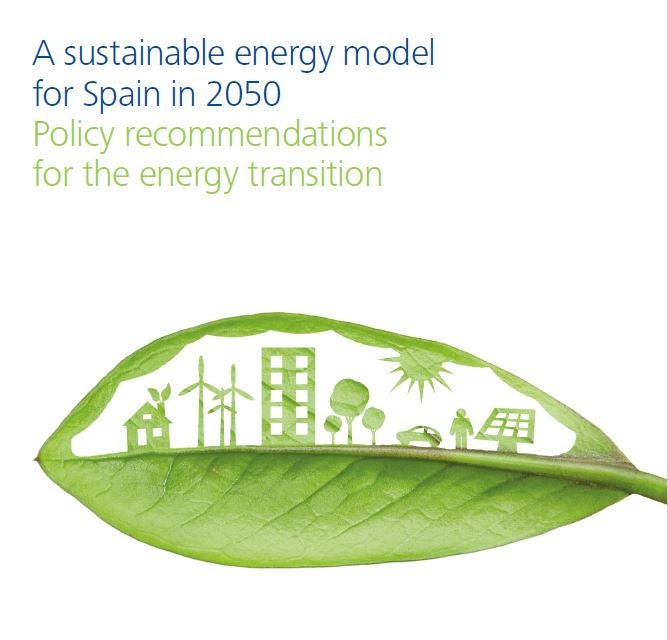International Commitment to the Fight against Climate Change
The recent Paris Agreement reached at the XXI Conference of the Parties (COP21) of the United Nations Framework Convention on Climate Change aims to keep the increase in global average temperature well below 2 °C with respect to preindustrial levels.
Among the positive aspects of the agreement is the fact that it highlights the commitment, from 2050 until the end of this century, to achieve neutral emissions caused by human activities and to create mechanisms for transparency and monitoring emissions.
Previously, the EU had confirmed its targets for reducing GHG emissions by 2050: between 80% and 95% compared to 1990. For Spain this commitment would mean that emissions would be limited to a very small value – between 14 and 88 MtCO2 / year – which in practice would translate into the inability to produce emissions related to energy or radical structural changes in the economy. In this context, Monitor Deloitte prepared a study entitled “A Sustainable Energy Model for Spain in 2050: Recommendations Energy Policy for the Transition.”
The Implications for Spain Regarding Compliance with the Environmental Objectives of the European Union
Spain issued the equivalent of 322 MtCO2 in 2013, with close to 60% of it due to transport, which mainly uses petroleum products and power generation. Based on the findings of our study, decarbonization of the Spanish energy model would require a massive and intensive effort to apply the following three concepts: to switch to energy vectors with lower emissions in all sectors (industrial, domestic, and services), to create electricity generation 100% free of emissions, and to apply energy efficiency and conservation measures.
In connection with the change of energy carriers, the country will need until 2050 to achieve 60-70% of final energy consumption in the form of electricity, displacing nearly all the petroleum products used in final energy. To this end, by 2050 the country will have a penetration of nearly 100% electric vehicles and will have made the modal shift from heavy freight to rail and electric truck. Electricity generation will have to be 90-100% from renewable sources by 2050 and will have to achieve a reduction in final energy intensity of 50% compared to current values. Significant action must also be taken on investment in energy efficiency.
In total, this process would invest € 330,000 and 385,000 million (over 10,000 million euros per year) by 2050, with special emphasis on investments in renewable energy storage, smart grids, and energy efficiency. This change in energy models might suppose, further, that the average cost of electricity supply would be reduced to 40% (from the current 120 €/MWh to 65-75 €/MWh in 2050) if the change in the electricity model is made intelligently by installing technologies that are mature and sufficiently competitive and by having achieved the massive electrification of energy demand (doubling current use). Dependence on energy imports would also have to be reduced and therefore the energy bill of the country would shrink.
In terms of the transition, our study focused on analyzing the detailed changes in energy use from major emitting sectors and the electricity sector, which would be required to finally establish recommendations for an efficient and intelligent transition.
To this end, in 2030 it would be necessary to reach a level of electrification of between 35 and 39% of total final energy consumption by increasing electrification demand in all sectors. The significant penetration of natural gas vehicles (NGV) in 2030 will be necessary to transition to different modes of transport.
Also, between 30 and 39 GW in new renewable capacity needs to be installed by 2030. The significant need for new renewable power requires, in turn, the necessary backup capability given its intermittent nature. A decarbonised power sector would require new storage technologies and many more international connections or management mechanisms well above the current demand. As of today, there are very reasonable doubts that any of the above will be available in bulk, or functional for backup at a competitive cost. Our study recommends making the most of current conventional nuclear and thermal parks in order to extend their life since realistic alternatives are necessary.
Finally, an energy efficiency reduction in final energy intensity of between 1.4% and 2% per year would be necessary continuously until 2030. The initiatives implemented will need to be numerous, diverse and cover virtually all sectors with special focus on building parks and road transport (electric vehicles are almost four times more efficient than conventional).
Transversal Policies for Intelligent and Efficient Energy Transition
Given the magnitude of the change, Spanish administrations and the private sector need to take decisive action to lead change in the energy model. This will require incentive policies to promote structural changes and new legal and regulatory frameworks.
In order to make an intelligent and competitive transition, our report proposes a set of recommendations to define decarbonization policies that: maintain the security and competitiveness of the energy model, facilitate the transition in different sectors, encourage decarbonization through efficient economic signals, and support defining a system of binding targets for all sectors.
Finally, since electrification is key to meeting these objectives, it is essential to establish policies concerning the electricity sector, for example regarding planning, renewable power incentives, or the structure of the electricity tariff. These plans should allow for the country to continue taking the lead in environmental policies without generating imbalances in the electrical system or jeopardizing technical or economic sustainability.



Leave a Reply